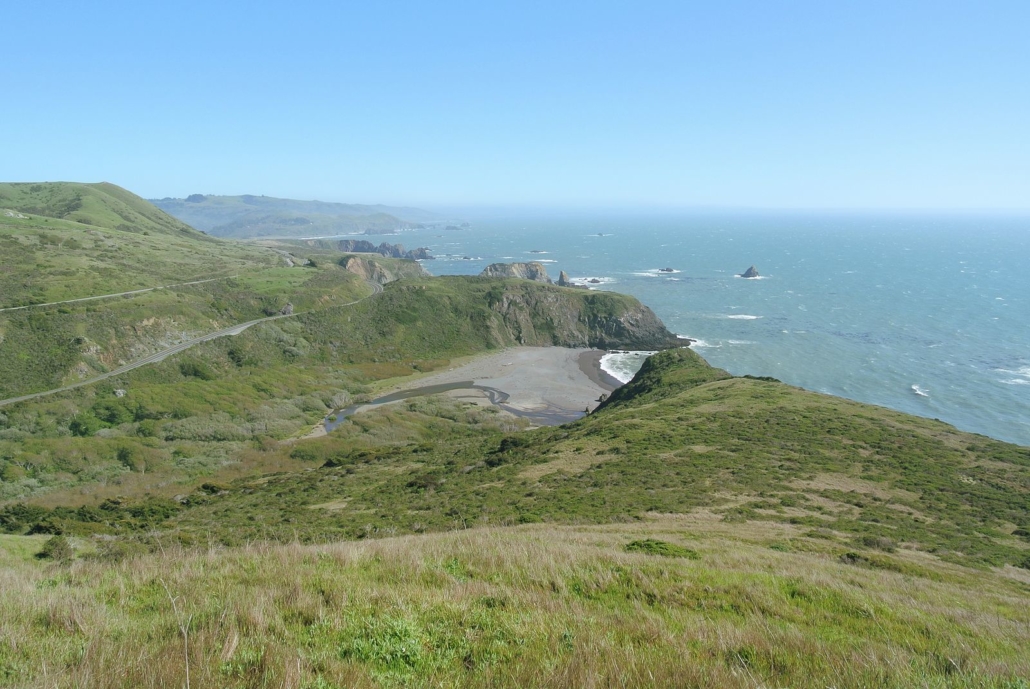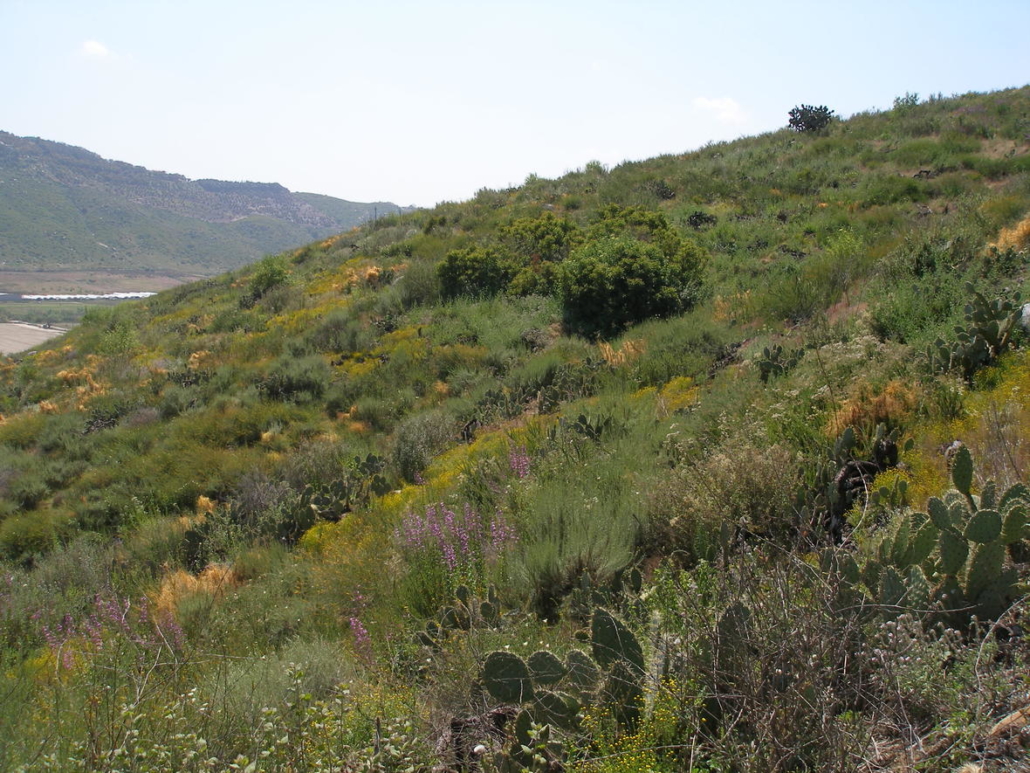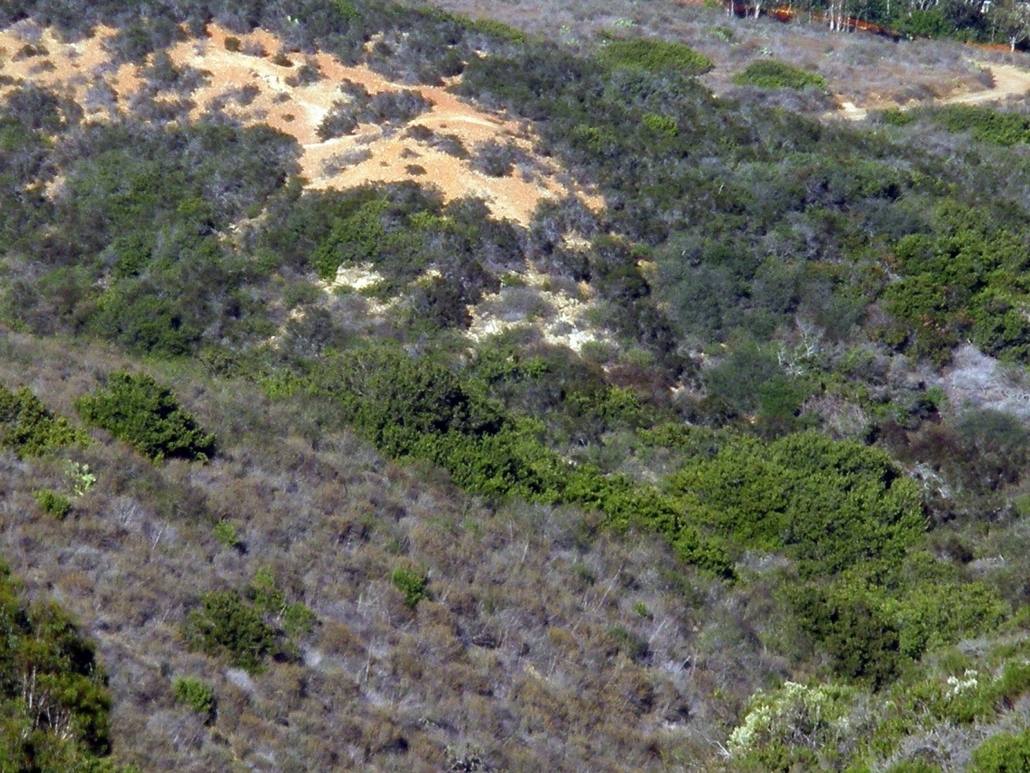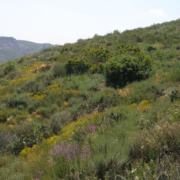In nature, plants arrange themselves into communities of “friends” based on common microclimates, water and nutrient needs, and how they interact with the physical environment. Native plant communities also are based on interactions with each other and other species such as insects, birds, and other animals.
Most plant communities occur repeatedly in natural landscapes under similar conditions.
Local native plant communities have evolved together over a long period of time, and grow well together. They will even “reject” the outsiders and work together to compete for nutrients, sunlight, and other resources
This is one of many good reasons to learn about the San Diego region’s native plant communities and to select plants that like to live together in communities for sustainable landscaping.
Three examples of San Diego regional plant communities
California Coastal Prairie Community

California Coastal Prairie along the coast north of Jenner, California. Photo: Wikimedia/Creative Commons
California’s coastal prairies are the most diverse of any grassland in North America. Perennial flowers outnumber grass species here. Plants include: California Poppy (Eschscholzia californica), Blue-Eyed Grass (Sisyrinchium), Fern Leaf Yarrow (Achillea ‘Moonshine’), Seaside Daisy (Erigeron glaucus), and Cliff Buckwheat (Eriogonum parvifolium)
California Coastal Sage Scrub Community

California Coastal Sage Scrub in the San Pasqual area. Photo: Barbara Kus, USGS/Creative Commons
California coastal sage scrub features fire-adapted, drought deciduous plants, which are rapidly disappearing to urbanization in southern California. Fortunately, some areas, including the San Diego Safari Park Biodiversity Reserve, have been conserved. Plants include: grey musk sage (Salvia Pozo Blue), sticky monkeyflower (Diplacus aurantiaus), San Diego sage (salvia munzia), fuschia gooseberry (Ribes speciosum), and woolly bluecurls (Trichostema lanatum)
California Chaparral Community

California Chaparral near the University of California, San Diego. Photo: UCSD/Creative Commons
Chaparral exists in many coastal ranges, and on the western and eastern slopes of the southern California mountains. It is ‘hard’ brush that doesn’t rely as much on summer fog as the Coastal Sage Scrub does, and it is adapted to heat and drought. Plants include desert mallow (Sphaeralcea ambigua), bent grass (Agorstis pailens), San Diego mountain mahogany (Cercocarpus minutiflorus), bush poppy (Dendromeconi riguda), and clumping wild rye (Leymus condensatus),
This article was inspired by the 71-page Sustainable Landscapes Program guidebook available at SustainableLandscapesSD.org. The Water Authority and its partners also offer other great resources for landscaping upgrades, including free WaterSmart classes at WaterSmartSD.org.






